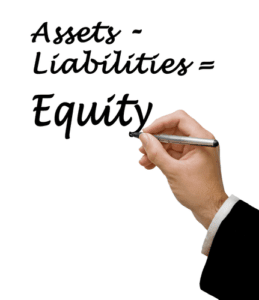
In summary, unearned revenue is a vital concept within accrual accounting, helping provide a more accurate representation of a company’s financial position. By understanding and accurately recording unearned revenue, businesses can better manage cash flow and service obligations to their customers. It is classified as a current liability, as it is a debt owed to your customer. Once the delivery has been completed, and your business has finally provided the prepaid goods or services, the unearned revenue is converted into revenue on the balance sheet. Businesses can profit greatly from unearned revenue as customers pay in advance to receive their products or services. The cash flow received from unearned, or deferred, payments can be invested right back into the business, perhaps through purchasing more inventory or paying off debt.
What Is Unearned Revenue vs. Deferred Revenue?

Two of the figures you’ll want to take a look at are a company’s unearned revenue and its working capital. But how does one relate to the other—and do they even have a direct relationship with one another? Read on to learn more about unearned revenue, working capital, and whether the former actually has an impact on the latter. By properly managing unearned revenue and fulfilling their obligations, is unearned revenue a current liability companies can maintain customer satisfaction, improve cash flow, and enhance their overall financial performance. Ensure that employees involved in managing unearned revenue, including those in accounting, sales, and customer service roles, are well-trained and knowledgeable about the company’s policies and procedures. This will help promote consistency and accuracy in managing unearned revenue.
- Learn financial statement modeling, DCF, M&A, LBO, Comps and Excel shortcuts.
- Using journal entries, accountants document the transactions involving unearned revenue in an organized manner.
- After James pays the store this amount, he has not yet received his monthly boxes.
- The plan includes a treatment in November 2019, February2020, and April 2020.
- The accounting period were the revenue is actually earned will then be understated in terms of profit.
Why Is Deferred Revenue Treated As a Liability?

The plan includes a treatment in November 2019, February2020, and April 2020. The company has a special rate of $120 if theclient prepays the entire $120 before the November treatment. Inreal life, the company would hope to have dozens or more customers.However, to simplify this example, we analyze the journal entriesfrom one customer. Assume that the customer prepaid the service onOctober 15, 2019, and all three treatments occur on the first dayof the month of service. We also assume that $40 in revenue isallocated to each of the three treatments. Unearned revenue is a liability since it refers to an amount the business owes customers—prepaid for undelivered products or services.
Create a free account to unlock this Template
Also, to review accounts payable, youcan also return to Merchandising Transactions for detailed explanations. For example, a contractor might use either the percentage-of-completion method or the completed contract method to recognize revenue. Under the percentage-of-completion method, the company would recognize revenue as certain milestones are met. Under the completed-contract method, the company would not recognize any profit until the entire contract, and its terms were fulfilled.
Some examples of unearned revenue include advance rent payments, annual subscriptions for a software license, and prepaid insurance. The recognition of deferred revenue is quite common for insurance companies and software as a service (SaaS) companies. Unearned revenue refers to the money small businesses collect from customers for their products or services that have not yet been provided. In simple terms, it is the prepaid revenue from the customer to the business for goods or services that will be supplied in the future. For example, assume that a landscaping company provides servicesto clients.
Where does unearned (prepaid) revenue go on a balance sheet?
- The payment is considered a liability to the company because there’s a possibility that the good or service may not be delivered or the buyer might cancel the order.
- Since Ted is required under the partnership agreement to pay the creditors if the partnership defaults, that makes him a general partner.
- He does so until the three months is up and he’s accounted for the entire $1200 in income both collected and earned out.
- Contracts can stipulate different terms whereby no revenue may be recorded until all of the services or products have been delivered.
- Income taxes are required to be withheld from an employee’s salary for payment to a federal, state, or local authority (hence they are known as withholding taxes).
- Every period, the same payment amount is due, but interestexpense is paid first, with the remainder of the payment goingtoward the principal balance.
Even though a payment has been received it is not considered income immediately. So it stays on your balance sheet until services or products are delivered. It is good accounting practice to keep it separated in a deferred income account. Since the deliverable has not been met, there is potential for a customer to request a refund. To calculate interest, the company canuse the following equations. This method assumes a twelve-monthdenominator in the calculation, which means that we are using thecalculation method based on a 360-day year.
Manage cash flow
Therefore, the revenue must initially be recognized as a liability. Note that when the delivery of goods or services is complete, the revenue recognized previously as a liability is recorded as revenue (i.e., the unearned revenue is then earned). Continuously review and adjust the company’s unearned revenue management practices as needed to reflect changes in the business environment, accounting standards, or company operations. This will help maintain an effective and compliant unearned revenue management process. In this article, we’ll discuss the nature of unearned revenue, its treatment as a liability, and its impact on financial reporting and business operations.
Be ready for tax time
Once goods or services have been rendered and a customer has received what they paid for, the business will need to revise the previous journal entry with another double-entry. This time, the company will debit its unearned revenue account while crediting its service revenues account for the appropriate amount. Deferred revenue is payment received from a customer before a product or service has been delivered. Deferred revenue, which is also referred to as unearned revenue, is listed as a liability on the balance sheet because, under accrual accounting, the revenue recognition process has not been completed.
- If the company fails to deliver the promised product or service or a customer cancels the order, the company will owe the money paid by the customer.
- You then will need to create a journal entry linked to each invoice.
- However, during thecompany’s current operating period, any portion of the long-termnote due that will be paid in the current period is considered acurrent portion of a note payable.
- Since the seller is expected to receive advance payments for quick orders or subscriptions with regular service delivery, it is recorded as a current liability in the balance sheet of the seller.